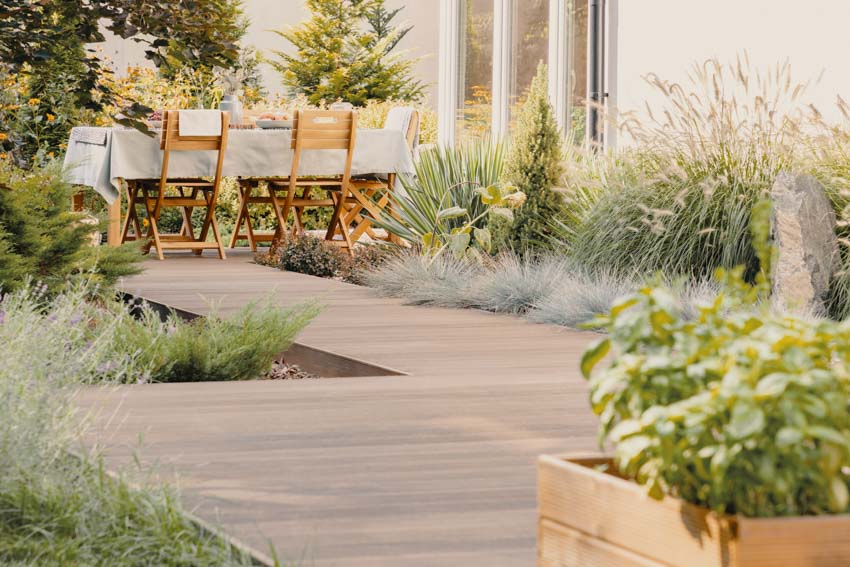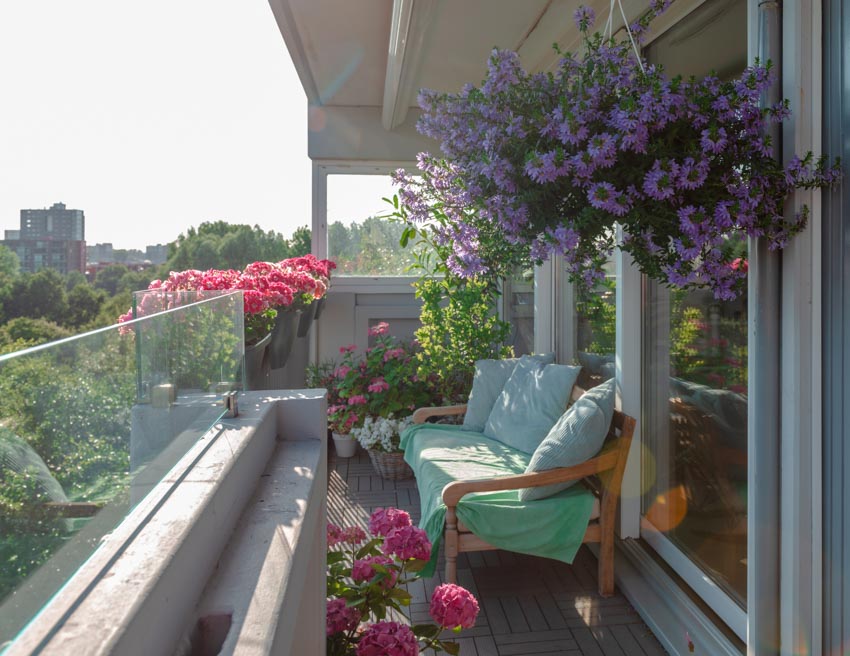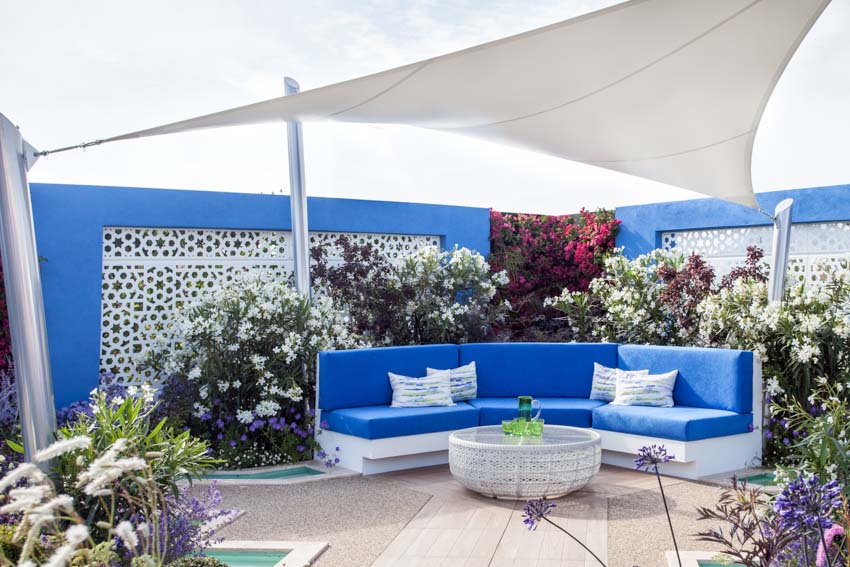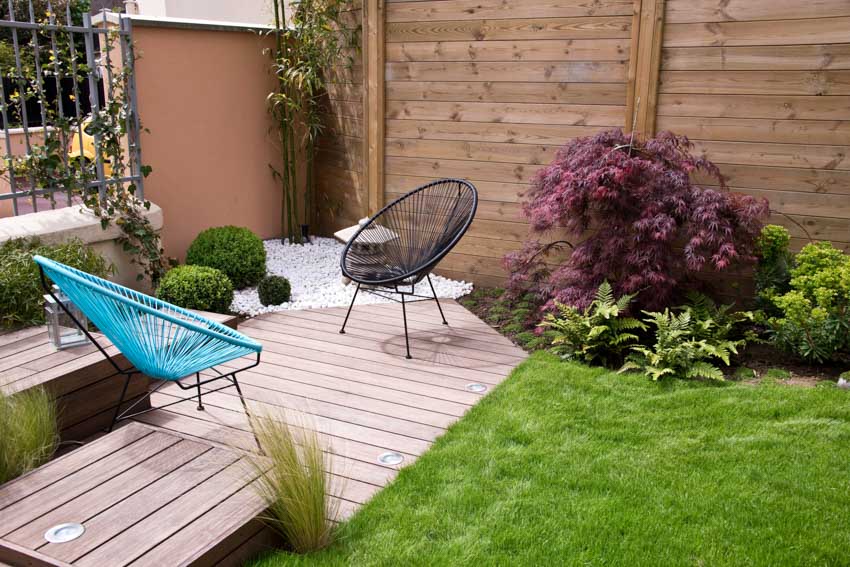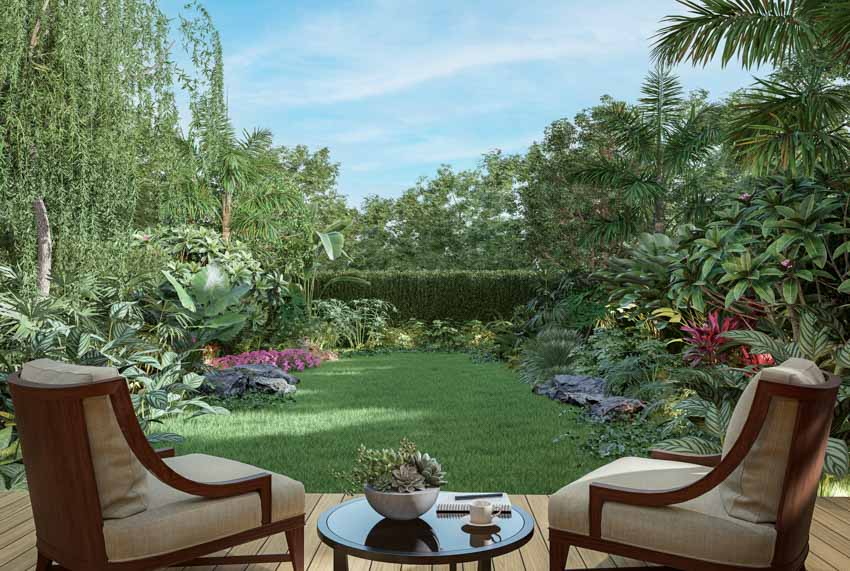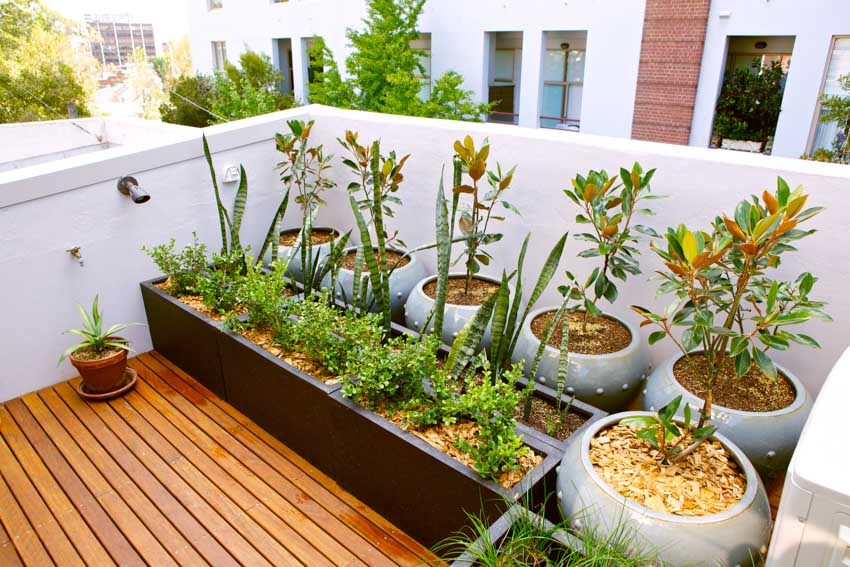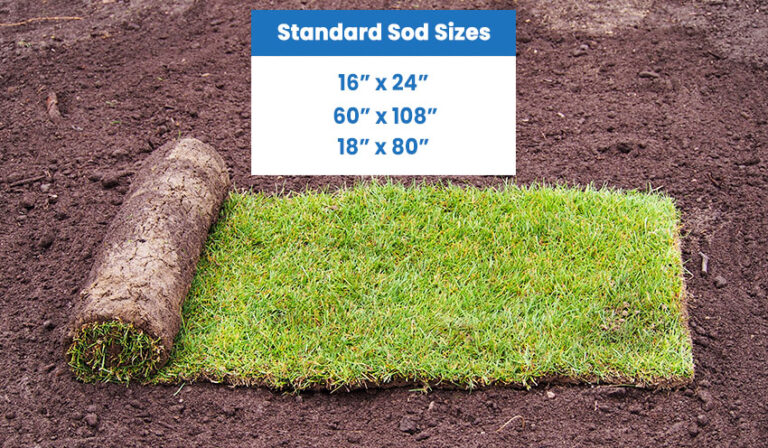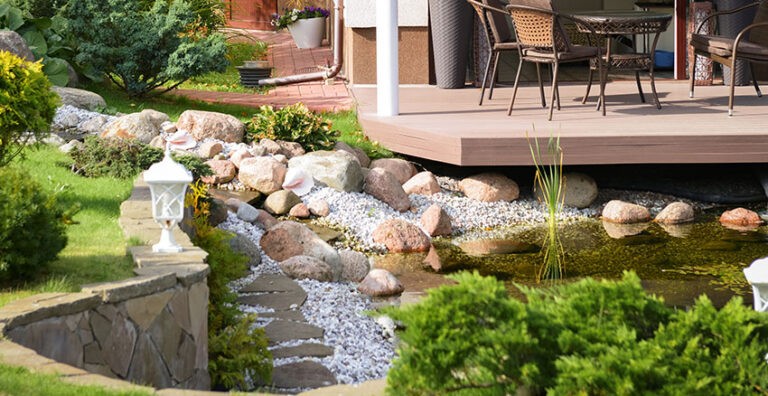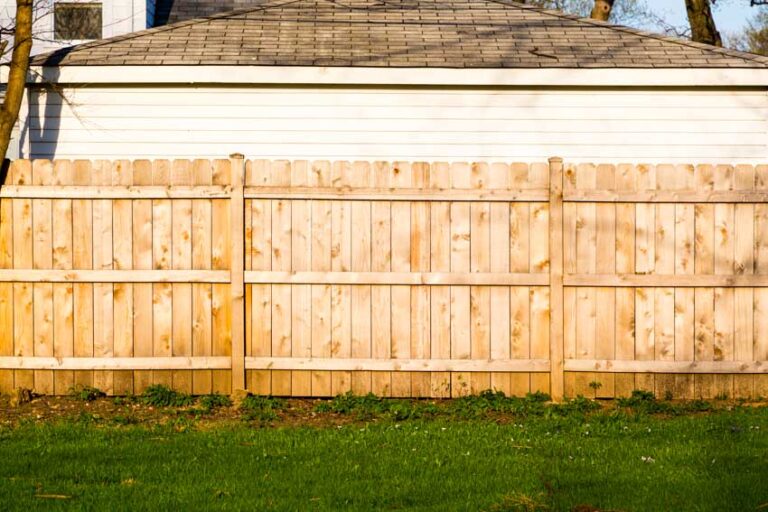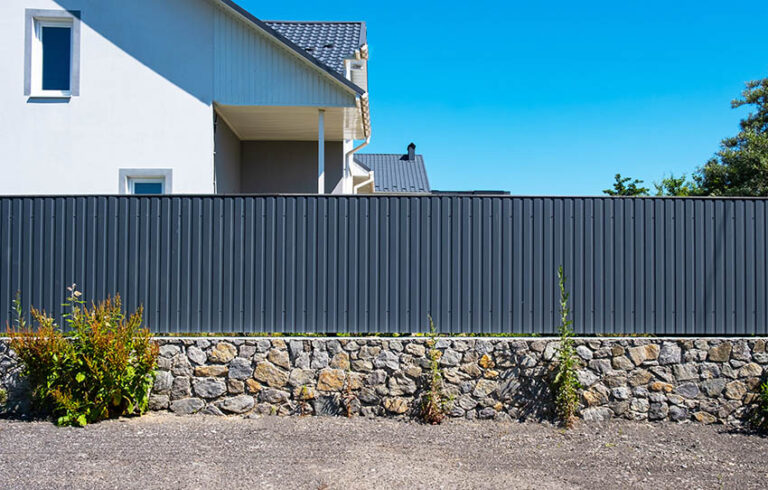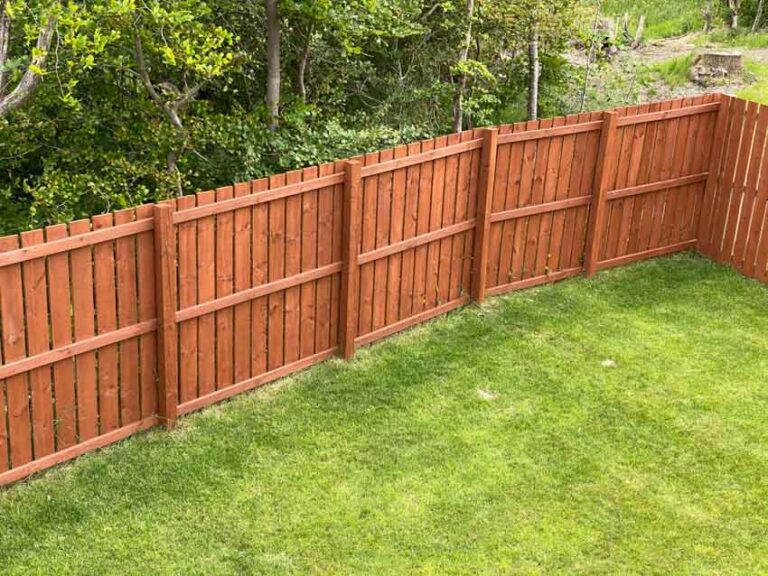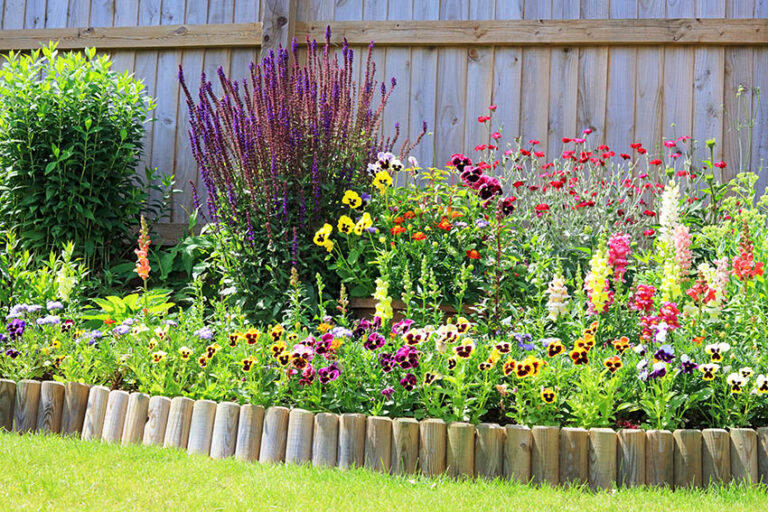Terrace Garden Ideas (Layouts & Designs)
In this terrace garden ideas guide you’ll see how to build one, materials cost, and different designs for backyard layouts, garden beds & vegetable gardens.
Starting a terrace garden is usually done out of a lack of space for a larger garden, but there are tons of reasons you might consider building one for yourself! Not only do they add color and contrast to a space, but they also bring a sense of peace and tranquility to otherwise busy urban areas. Consider where most terrace gardens are built: patios, rooftops, and indoors where there is limited space and sometimes limited resources.
Considering that most of these spaces are smaller, planning accordingly is the number one priority when planning a terrace garden. It’s easy to go nuts purchasing all sorts of plants, shrubs, and vines, but not having them placed in advance makes organizing a challenge. We’ll talk about some of the best ways to plan, build, and care for a terrace garden.
How To Build A Terrace Garden
Before you choose plants or water features, look at the space you intend to build in. Keep in mind the size of the area you’re building in, as well as how much shade the area receives and if you should add any.
Next, focus on any supporting structures in the space; are there walls, posts, or types of fencing? Those can be used to support vining plants. Most importantly, where will you access water for tending to the garden?
Perhaps you have a wall that you might cover in vines, or a corner where certain garden water features would attract birds and pollinators to your garden.You may also want to consider outdoor bench, or furniture placement in relation to your plants to create a relaxing retreat.
No matter the case, determine where potted plants will be, where any raised garden beds will be established, and which areas are shaded at which points in the day.
Once you have identified and accommodated your existing resources, move on to the next step. It helps to sketch out your space so that you can plan and edit where you would like to establish plants or other features.
Terrace Planning
Now that you have a solid understanding of what you’re working with, it’s time to plan out your terrace garden. Choosing planters, raised beds, and lattices come first. Consider how many plants you would like, as well as the number of plants that can be planted in each container. This is the time to choose which style you’re going for. Establish any color schemes or themes you would like to follow and move forward from there.
When selecting which containers you need for your terrace garden, also consider whether they have drainage, if there will be enough room for plants to grow and thrive in them, and if they coordinate well in the space you’re using.
There are an abundance of different styles of pots and raised beds, so have fun with this step, and start putting things together. If you’re adding in a water feature, do this before you add any containers so that you have a good idea of how you will work this into your grand design.
You can plan your terrace garden layout by using one of the 3D landscape design software programs. These will let you plan your space and see your design before purchasing any materials.
Terrace Cost
The cost of a terrace garden depends on a few variables here. It’s a good idea to take stock of what you already have. If you have your planters and containers, your watering cans, or even a bird bath, then those things can be subtracted from your overall cost, since you are simply repurposing items you have laying around. As an added bonus, you’ll be recycling, which helps out the environment!
Once you add up the items you already have, it’s time to set a budget. Terrace gardens can be pricey, and if you don’t have wads of cash to throw at them, then budgeting is an important step. Figure out how much you’d like to spend on each of these factors that, together, make up the bulk of the terrace garden:
• Containers: These can be purchased almost anywhere, from hometown hardware stores to big box stores and boutiques. Prices range from a few dollars to hundreds, so putting a number on how much you want to spend on containers helps to narrow down your buying options.
• Plants: Best purchased from local nurseries, plants are the biggest part of any terrace garden. Consider which varieties you’d like, whether they’ll be seasonal, perennials, or vines, and write down the ones you like if you know what you’re after. Important to consider: how many plants, how big, and how popular.
• Accents: Vying for a bird bath, playful fountain, or even a little gnome? Add these to your budget list. These placeholders can add up pretty quickly, especially if you want something made well and designed to fit the look you’re after. You can try shopping these items online before you budget to see estimated costs.
• Maintenance: Yes, this is an added cost, too. Think about how often you’ll need to fertilize, which tools you’ll need for pruning and deadheading, and even stakes to hold up new plant stalks. These items are generally cheap, but once you’ve added them all up, the bill can be a little higher than expected.
Garden Terrace Designs
Now for the fun part! There are so many designs one could follow, but really, it all comes down to your preference and the space you have to work with. If your space doesn’t accommodate a design you like, then some prepwork may be in order.
For example, if you have a rooftop with nothing but concrete walls, but you’re after a zen garden theme, it might be necessary to place art or raised beds in front of those walls to help dissipate the stained slate colors of the walls.
Important to remember is that in some cases, you can also work overtop of your garden area. A pagoda or other shade feature such as a lattice roof can accommodate vines and low-light plants, which are typically broad-leafed and elegant.
Adding to your space can help you achieve the design you’re going for! Here are a few basic designs that you can add onto:
• Tropical oasis: This is an easy design that utilizes brightly-colored blooms and tall stalks to draw attention. Typically with a tropical design, you’ll want natural wood containers and a water feature.
It’s also ideal to shade a part of the terrace garden so that tropical plants with larger foliage can be added as accent plants. A fountain is almost always a bust in this design, but a simple small pond with a pump can guarantee the same tropical touch.
• Eclectic: The best possible design for a gardener on a budget. Eclectic terrace garden designs can be achieved by using mismatching containers and flowering plants, and are almost always well pulled together by a cute outdoor bistro set!
For additional contrast, you can even implement some hanging types of outdoor lighting fixtures to give the space a desirable nighttime atmosphere. This is a perfect design idea for rooftop gardens!
• Classic: Building a classic terrace garden may take some skill and finesse. Think topiary shrubs, roses, and small accent flowers. Smaller plants such as marigolds, creeping myrtle, and cyclamen have a great aesthetic for this style.
Matching containers are a must here and look best in natural shades of slate or stone. Accent lights at the bases of shrubs aiming up can add a very professional feel to your class terrace garden.
Terraced Backyard Garden
If you have more space than a rooftop deck or a small patio, you might be considering building a terraced garden in your backyard or garden. Having this kind of space open up a myriad of possibilities, including layered landscapes, pagoda gardens, and rock gardens.
The best thing about having more space for a terraced garden is that you have the capacity to design a wider variety of features and themes. Keep in mind, however, that with larger spaces come larger costs! The best backyard terraced gardens feature water and structures. Building up raised garden beds is almost always a must, but using containers works well, also.
Since this is a backyard garden and not confined to a building, you can even consider using pavers to map out where you would like the garden to be, or a path through the garden to a sitting space or as a gateway to a larger part of the property! Next, we’ll look at a few things that can be implemented into a backyard terraced garden.
Terraced Garden Beds
These look tricky, but, it’s as easy as building a raised bed on its own; you’re simply adding more layers! Start with a design based on how you want the garden to look, and budget your supplies accordingly.
For a project like this, you will need some woodworking skills to ensure that you have the right height, shape and size for your layers. Most terraced garden beds stop at two or three layers, but depending on where you are building and the support systems that are in place, you can ideally build as many layers as you want!
Always start by building a large bottom layer. This will look like an extra-wide raised bed, with the exception of supports being placed, whether those are made of lumber or steel (do your research to find out what you need to support a structure the size of the one you are building).
Any additional layers built over the bottom layer need to be secured properly to the layer under it, preventing any catastrophes during planting. Once you have your tiered beds framed, you can begin adding filler soil.
Start from the top layer and work your way down, as soil that falls through the uppermost layers will help to fill in hard-to-reach spots in subsequent layers.
Once you have your soil filled in, it’s time to start placing your plants. What you plant is entirely up to you, but do consider where the sun falls on the structure during the hottest points of the day, and where water will gather most at the bottom.
If you intend to plant flowering plants, consider how they grow. If you want petunias, for example, there are varieties that vine out beautifully to cover lower levels of a terraced garden and varieties that remain in an upright shrub-esque shape.
Terraced gardens look best when the containing wood lattice walls are at least partially covered by different vertical garden ideas, so have fun with climbing plants and flowers to help fill in the gaps. you can also use a variety of different hanging pergola plants. Before you know it, your terraced garden will look like a wall or a mountain of color.
Terraced Vegetable Gardens
If you intend to grow vegetables in your raised terrace garden, start with soil that is intended for such applications. These types of soils contain much-needed nutrients to support fruiting plants throughout the growing season and generally make maintenance much easier. This way, you’ll be worrying less about fertilizing often and more about how big your tomatoes have grown.
Placement is key with any layered garden, but especially so for vegetables gardens of the same type. Depending on what you can grow in your area, do some research or speak with a local master gardener to determine which vegetables grow well together, and which don’t.
Vegetables can be picky about who their neighbors are, and their health and eventual fruit depends on what they get along with.
For example, tomatoes and carrots grow very well together. For a middle layer, you could plant tomatoes in their respective cages or with stakes. To fill in the gaps between the tomato plants, you could try planting some carrots, leaving ample room between them for healthy root systems to grow.
There are tons of excellent vegetable pairings in gardening, so finding the ones that work best for your garden will ultimately be a huge life-saver.
Whether you’re a beginner and just want something simple, or an experienced gardener looking for a challenge, terrace gardens are a great way to create a living space perfect for relaxation and productivity.
Without proper planning, however, many terrace garden projects flop. On that note, use this guide to help you get your garden dreams moving, and don’t forget to have fun in the process!
See more related content in our article about beautiful fence planters on this page.

